
Quink (a portmanteau from 'quick' and 'ink') is a fountain pen ink developed by the Parker Pen Company. It was introduced in 1931 and has remained in production ever since.

Quink (a portmanteau from 'quick' and 'ink') is a fountain pen ink developed by the Parker Pen Company. It was introduced in 1931 and has remained in production ever since.
In 1928, under the direction of Kenneth Parker, the Parker Pen Company set out to develop a new and improved fountain pen ink. Inferior inks had long been the main cause of clogged fountain pens, yet popular ink formulations had remained unchanged in decades. Research for the project was initially outsourced to Miner Laboratories of Chicago. In August 1930 one of the lead chemists, Galen Sayler, was hired directly and put to work in a small laboratory at company headquarters in Janesville, Wisconsin. [1]
Quink was heavily advertised, and an immediate success. According to Kenneth Parker's personal journal, Quink production began on March 17, 1931, and $89,000 worth had been shipped by October 22—more than twice the company's expectations and an excellent return on the $68,000 spent on its development. [2] Quink was introduced as a general-purpose ink, safe for use in all fountain pens. It remains in production, with minor changes in formulation.
A popular misconception is that the ink was invented by a Filipino, Francisco Quisumbing, and takes its name from 'Quisumbing Ink'. Although this apocryphal tale appears on numerous websites, no reliable source is ever cited. The accounts uniformly identify the supposed inventor as Francisco Quisumbing, a Filipino botanist who studied in both the Philippines and the US, gaining a PhD in Plant Taxonomy, Systematics and Morphology from the University of Chicago in 1923. What biographical information that can be found is incomplete and unreliable. There is no indication that such a person ever worked for Parker.
There was a company called Quisumbing Ink Products in the Philippines, unconnected to Parker, founded by a chemical engineer named Francisco A. Quisumbing. The milestones of Quisumbing's documented career are close enough to those recounted in the apocryphal accounts that it is probable that they refer, with differing degrees of accuracy, to the same man. The real Francisco A. Quisumbing was born in 1893 and received his B. Agr. in 1914 and his M. S. in 1918, both from the University of the Philippines. He was a Fellow of the University of the Philippines at Columbia University in New York from 1918 to 1921, receiving his Ph.D. from Columbia in 1921. He returned to the Philippines to teach as Professor of Industrial Chemistry at the University of the Philippines from 1922 to 1934. In 1923, he started the Quisumbing Ink Products company, and in 1934, founded the Quisumbing School of Technology. [3] According to a book published in 1960, Quisumbing inks then enjoyed an exclusive contract to supply all branches of the Philippine government. [4]
Quink was later manufactured in the Philippines under license from Parker, and the bottles were labelled accordingly. [5]

The success of Quink lay in its useful features: it had the desired quality of ink flow, it resisted water and molding, it was non-corrosive, and it was claimed to be quick-drying. From the beginning it was advertised as containing a "secret" additive which purportedly dissolved sediment and reduced clogging. In 1942 this additive was given the trademarked name "Solv-X". [6]
Quink was developed and introduced when the Duofold was Parker's flagship line, [7] but the Duofold's successor, the Vacumatic [8] was already under development and was in full production by 1933. Vacumatics held their ink supply directly within their celluloid barrels, so Quink was formulated accordingly.
Quink is not to be confused with two iterations of a special ink formulated exclusively for use in the Parker 51. This ink was highly alkaline and while water-based, also included a substantial amount of isopropyl alcohol. It was released in 1941 as "51" ink, along with the Parker 51 pen; in 1947 it was made somewhat less corrosive, and renamed "Superchrome". Parker was careful to print prominent warnings on caps, labels, and boxes that the ink could only be used in the 51 (and, later, its economy version, the 21), and would damage any other pen.
Prior to the full public introduction of the Parker 51 in 1941, selected market testing of the new pen was carried out, starting in 1939. Since the 51 and its special ink had been designed together as a complete system, the new ink was given limited release in tandem with the market tests under the name "Double Quink". By all evidence, Double Quink was not advertised to the general public, and the name was dropped once the 51 went on general sale. Actual surviving examples of Double Quink bottles would appear to be vanishingly rare: not a single photo appears in the Shepherds' authoritative and officially-sponsored Parker 51 monograph, despite the researchers' access to Parker's own archives as well as collections worldwide. [9]

According to fountain pen enthusiasts, Parker Quink is generally considered to be "safe fountain pen ink"; [10] this means that it should not stain or clog fountain pens very easily.
The use of fountain pens gradually decreased during the second half of the 20th century. Many collectors and enthusiasts continue to use the Parker 51 pen in the 21st century, with a limited edition of the model (available in two colors, "Vista Blue" and black) released by Parker in 2002. [11] As part of the 2002 product revival, Parker promoted its quick-drying ink as the ideal accompaniment for the Parker 51.

A ballpoint pen, also known as a biro, ball pen, or dot pen, is a pen that dispenses ink over a metal ball at its point, i.e., over a "ball point". The metals commonly used are steel, brass, or tungsten carbide. The design was conceived and developed as a cleaner and more reliable alternative to dip pens and fountain pens, and it is now the world's most-used writing instrument; millions are manufactured and sold daily. It has influenced art and graphic design and spawned an artwork genre.

Ink is a gel, sol, or solution that contains at least one colorant, such as a dye or pigment, and is used to color a surface to produce an image, text, or design. Ink is used for drawing or writing with a pen, brush, reed pen, or quill. Thicker inks, in paste form, are used extensively in letterpress and lithographic printing.

A fountain pen is a writing instrument that uses a metal nib to apply water-based ink, or special pigment ink—suitable for fountain pens—to paper. It is distinguished from earlier dip pens by using an internal reservoir to hold ink, eliminating the need to repeatedly dip the pen in an inkwell during use. The pen draws ink from the reservoir through a feed to the nib and deposits the ink on paper via a combination of gravity and capillary action. Filling the reservoir with ink may be achieved manually, via the use of an eyedropper or syringe, or via an internal filling mechanism that creates suction or a vacuum to transfer ink directly through the nib into the reservoir. Some pens employ removable reservoirs in the form of pre-filled ink cartridges.
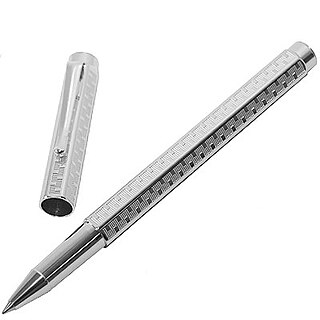
A pen is a common writing instrument that applies ink to a surface, usually paper, for writing or drawing. Early pens such as reed pens, quill pens, dip pens and ruling pens held a small amount of ink on a nib or in a small void or cavity that had to be periodically recharged by dipping the tip of the pen into an inkwell. Today, such pens find only a small number of specialized uses, such as in illustration and calligraphy. Reed pens, quill pens and dip pens, which were used for writing, have been replaced by ballpoint pens, rollerball pens, fountain pens and felt or ceramic tip pens. Ruling pens, which were used for technical drawing and cartography, have been replaced by technical pens such as the Rapidograph. All of these modern pens contain internal ink reservoirs, such that they do not need to be dipped in ink while writing.

A marker pen, fine liner, marking pen, felt-tip pen, felt pen, flowmarker, sign pen, vivid, flomaster, texta, sketch pen, koki or simply marker is a pen which has its own ink source and a tip made of porous, pressed fibers such as felt. A marker pen consists of a container and a core of an absorbent material that holds the ink. The upper part of the marker contains the nib that was made in earlier times of a hard felt material, and a cap to prevent the marker from drying out.

Iron gall ink is a purple-black or brown-black ink made from iron salts and tannic acids from vegetable sources. It was the standard ink formulation used in Europe for the 1400-year period between the 5th and 19th centuries, remained in widespread use well into the 20th century, and is still sold today.

The Parker Pen Company is an American manufacturer of luxury writing pens, founded in 1888 by George Safford Parker in Janesville, Wisconsin, United States. In 2011 the Parker factory at Newhaven, East Sussex, England, was closed, and its production transferred to Nantes, France.

The Parker 51 is a fountain pen first introduced in 1941. Parker marketed it as "The World’s Most Wanted Pen", a slogan alluding to restrictions on production of consumer goods for civilian markets in the United States during World War II. Parker's continual advertising during the war created demand that took several years to fulfil after the end of the conflict.

The Parker Jotter is the Parker Pen Company's second and best-selling retracting refillable ballpoint pen. The first was the Hopalong Cassidy ballpoint. Since 1954, over 750 million have been sold worldwide. It is priced between $6 for lower end models, and $20 for higher end models, such as special editions. Its refill has a ballpoint tip originally called the T-Ball, with a unique textured surface that greatly reduces slipping and failure to transfer ink onto slick paper, known as "skipping." The technology is now commonly used in the pen industry. The pens are also a popular advertising medium. The external design of the Parker T-Ball refill is a configuration copied by many other brands of refillable pens.
Lamy is a German pen manufacturing company founded in 1930 by Josef Lamy, a former sales representative for Parker Pen. The company acquired the Orthos pen manufacturer to begin production. Lamy offers a variety of writing products, including fountain pens.
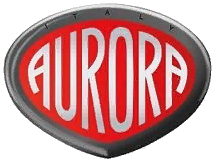
Aurora is an Italian manufacturer of fine writing instruments, fountain pens, paper and leather goods, founded in 1919 by wealthy textile merchant Isaia Levi. The company's products represent the first true Italian fountain pens and are still currently manufactured in their original factory in Turin, northern Italy. Aurora makes a number of small batch production pens, including the Aurora diamanté limited edition diamond embedded pen priced at around 1.46 million US Dollars. It is embedded with 2000 diamonds.
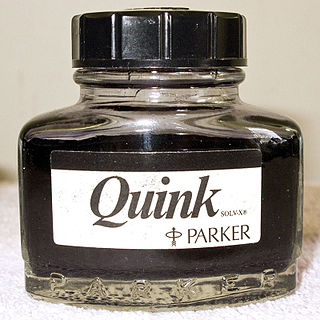
Fountain pen ink is a water-based ink intended for use with fountain pens.

Lewis Edson Waterman was an American inventor. He held multiple fountain pen patents and was the founder of the Waterman Pen Company.

A nib is the part of a quill, dip pen, fountain pen, ball point, or stylus which comes into contact with the writing surface in order to deposit ink. Different types of nibs vary in their purpose, shape and size, as well as the material from which they are made.

Francisco Arguelles Quisumbing is said to be a Filipino botanist claimed to be the inventor of Quink ink used by The Parker Pen Company. He studied in the Philippines and the US, gaining a BSc from the University of the Philippines School of Agriculture, Los Baños in 1918 and an MSc in 1921. He travelled to the US and gained a PhD in Plant Taxonomy, Systematics and Morphology from the University of Chicago in 1923, under the American pensionado program. He went back to the Philippines after World War II but was unable to organize the Philippine Ink Corporation under the Japanese Reparations Program because of too much government intervention. Quink, which was sold in the US from 1931, is claimed to stand for 'Quisumbing Ink', but there is no reliable evidence to support this. Parker state instead that the name is an amalgam of "quick and ink". However Parker did license the manufacture of Quink in the Philippines, for that market, and the bottles were labelled as such. This, together with the name coincidence, may have been the source of the rumour.
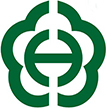
The Shanghai Hero Pen Company is a Chinese manufacturing company which is popular for its Hero fountain pens. It was founded in 1931 as the "Wolff Pen Manufacturing Company", and was renamed in 1966 to the current name. Hero is commonly referred to as "Huáfú" which is the Hanyu Pinyin transliteration of the firm's abbreviated original Chinese name.
Chelpark Company Private Limited is an Indian stationery manufacturing company based in Bangalore. Chelpark is one of the oldest manufacturers of fountain pen ink in the country. "Chelpark" is a portmanteau of "Chellaram" and "Parker".
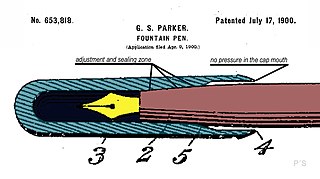
The Parker Jointless "Lucky Curve" is a range of fountain pens released by the Parker Pen Company in late 1897. The pen used the Lucky Curve ink supply system, designed to draw ink even when the pen was not in use, which was invented and patented by George Safford Parker in 1894. The pen was named "Jointless" because of its one-piece ink barrel, designed to prevent leakage, an innovation at the time – though the design made the refilling process messy. The pen was Parker's first to be advertised outside the United States. The American government purchased the pens in large quantities and a Parker Jointless was one of the pens used to sign the Spanish–American Treaty of Paris in 1898.
Chemical drain cleaners or openers are pure or mixtures of chemicals used to unclog drains that are blocked by hair, food, or other organic materials. They are often accompanied by other mechanical drain cleaners for the optimal effect. Chemical drain cleaners are available through hardware stores, although some may be intended for use by licensed plumbers. They may contain either strong acids or strong alkalis. These cleaners contain chemicals that dissolve at least some of the material causing the clog.